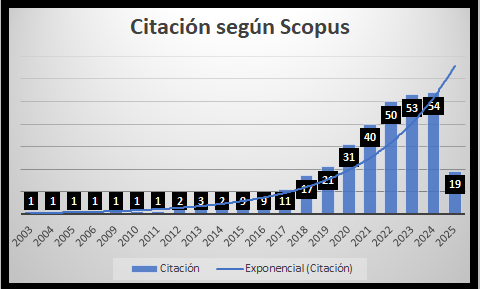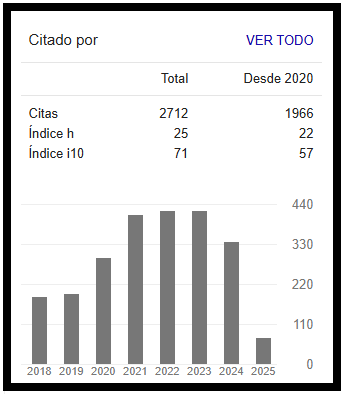Media and Journalists in Twitter: The Chilean Case
DOI:
https://doi.org/10.24265/cian.2011.n1.02Keywords:
Twitter, Journalism, Journalist, Social Networks, EthicsAbstract
Social networks like Twitter have become platforms used by people as well as corporations to reach audiences of a size that, barely a decade ago, seemed unimaginable. Journalism has also been affected by this trend, so now journalists and media corporations make use of these social networks.
Metrics
Downloads
References
ABC, diario (2011). “¿Cuántos usuarios hay en Twitter?”. Extraída el 19/IV/2011 desde: http://www.abc.es/20110401/medios-redes/abci-usuarios-reales-twitter-201104011423.html
Ad Age Staff (2011). “Global citizens, marketers rely on social media after Japanese quake”. Advertising Age, 82 (11), 2-21.
Ahmad, A.N. (2010). “Is Twitter a useful tool for journalists?”. Journal of Media Practice, 11 (2), 145-155.
American Society of News Editors, The (2011). “Ethics codes by state”. Extraída el 31/III/2011 desde http://asne.org/key_initiatives/ethics/ethics_codes.aspx
Arceneaux, N. & Schmitz, A. (2009). “Seems stupid until you try it: press coverage of Twitter 2006-9”. New Media Society, 12, 1262-1279.
BBC. (2011). “Editorial Guidelines”. Extraída el 31/III/2011 desde http://bbc.in/1EIZLT
Bischof, J. (2010). “Journalism ethics in the age of Twitter”. Extraída el 31/III/2011 desde http://www.journalism.co.za/index.php?option=com_-content&task=view&id=3241&Itemid=51
Brewer, D. (n.d.). “Editorial ethics for Twitter journalists”. Extraída el 31/III/2011 desde http://www.mediahelpingmedia.org/content/view/401/1/
Briggs, M. (2007). “Journalism 2.0: How to Survive and Thrive”. Extraída el 31/III/2011 desde http://www.kcnn.org/resources/journalism_20/
Cervantes, A. (2010). “Will Twitter be following you in the Courtroom?: Why reporters should be allowed to broadcast during courtroom proceeding”. Hastings Communication & Entertainment Journal, 33 (1), 133-157.
Cha, M.; Haddadi, H.; Benevenuto, F. & Gummadi, K. (2010). “Measuring User Influence in Twitter: The Million Follower Fallacy”. Conferencia sobre Weblogs y medios sociales.
Cobos, T. L. (2010). “Twitter como fuente para periodistas latinoamericanos”. Razón y Palabra, 73.
Crucianelli, S. (2010). “Herramientas digitales para periodistas”. Extraída el 31/III/2011. Knight Center fot Journalism in the Americas: http://knightcenter.-utexas.edu/hdpp.php
Dickerson, J. (2008). “Don’t Fear Twitter”. Nieman Reports, edición verano, 5-6.
Farhi, P. (2009). “The Twitter Explosion”. American Journalism Review, junio-julio, 26-31.
Greer, J. y Yan, Y. (2010). “New ways of connecting with readers: How community newspapers are using Facebook, Twitter and other tools to deliver the news”. Grassroots Editor, edición invierno, 1-7.
Hermida, A. (2010). “From TV to Twitter: How ambient news became ambient journalism”. M/C Journal, 13 (2), 7-7.
Hindman, M. (2009). The Myth of Digital Democracy. Princeton University Press.
Hutchins, B. (2011). “The acceleration of Media Sport Culture”. Information, Communication & Society, 14 (2), 237-257.
Lenatti, C. (2009). “All A-Twitter: Social Networking as a Tool for Newspaper Journalist”. The Seybold Report, 9 (3), 2-3.
Klout (2010). “The Official Klout Blog. Better Know the Klout Classes”. Extraída el 31/III/2011 desde http://corp.klout.com/blog/2010/08/better-know-the-klout-classes/
Li, J. & Rao, H.R. (2010). “Twitter as a Rapid Response News Service: An Exploration in the Context of the 2008 China Earthquake”. The Electronic Journal on Information Systems in Developing Countries, 42 (4), 1-22.
Los Angeles Times (2009). “Readers’ Representative Journal. A conversation on newsroom ethics and standards”. Extraída el 31/III/2011 desde http://lat.ms/9DoLMP
Morozov, E. (2011). The Net Delusion. The Dark Side of Internet Freedom. New York: Perseus.
New York Times, The. (2005). “The New York Times Company Policy on Ethics in Journalism”. Extraída el 31/III/2011 desde http://bit.ly/nFlsy
Radio Television Digital News Association, The (2005). “Ethics. Social Media and Blogging Guidelines”. Extraída el 31/III/2011 desde http://bit.ly/9fAAK0
Reuters. (2011). “Handbook of Journalism. Reporting from the Internet”. Extraída el 31/III/2011 desde http://bit.ly/XOjcm
Safko, L. & Brake, D. (2009). The Social Media Bible: Tactics, Tools, and Strategies for Business Success. New Jersey, John Wilew & Sons.
Salaverría, R. (2010). “Los medios deben desarrollar estrategias más activas en las redes sociales”. Extraída el 31/III/2011 desde http://eperiodistas.blogs-pot.com/2010/11/los-medios-deben-desenvolver.html
Sauter, J. (2009). Is social media the journalism of the future? Daily Records.
Stevenson, S. E. & Peck, L. A. (2011). “I Am Eating a Sandwich Now: Intent and Foresight in the Twitter Age”. Journal of Mass Media Ethics, 26 (1), 56-65.
Tremblay, J. (2010). “Twitter: Can It Be a Reliable Source of News?”. Nieman Reports, edición verano, 47-49.
Washington Post, The. (2010). “Newsroom Guidelines for Use of Facebook, Twitter and Other Online Social Networks”. Extraída el 31/III/2011 desde http://bit.ly/ewQUBs
Downloads
Published
Issue
Section
Categories
License
Copyright (c) 2011 Alberto López-Hermida Russo, Cecilia Claro Montes

This work is licensed under a Creative Commons Attribution 4.0 International License.
In case the manuscript is approved, the authors retain the copyright and assign to the journal the right to publish, edit, reproduce, distribute, display and communicate in the country of origin and abroad by means of print and electronic media in different databases.
In order for this procedure to be recorded, the author must fill out the following formats:
Format 1 - Author data Format.
Format 2 - Affidavit on originality and authorization for the publication of articles Format.
Format 3 - Open Science Compliance.








2.png)


















